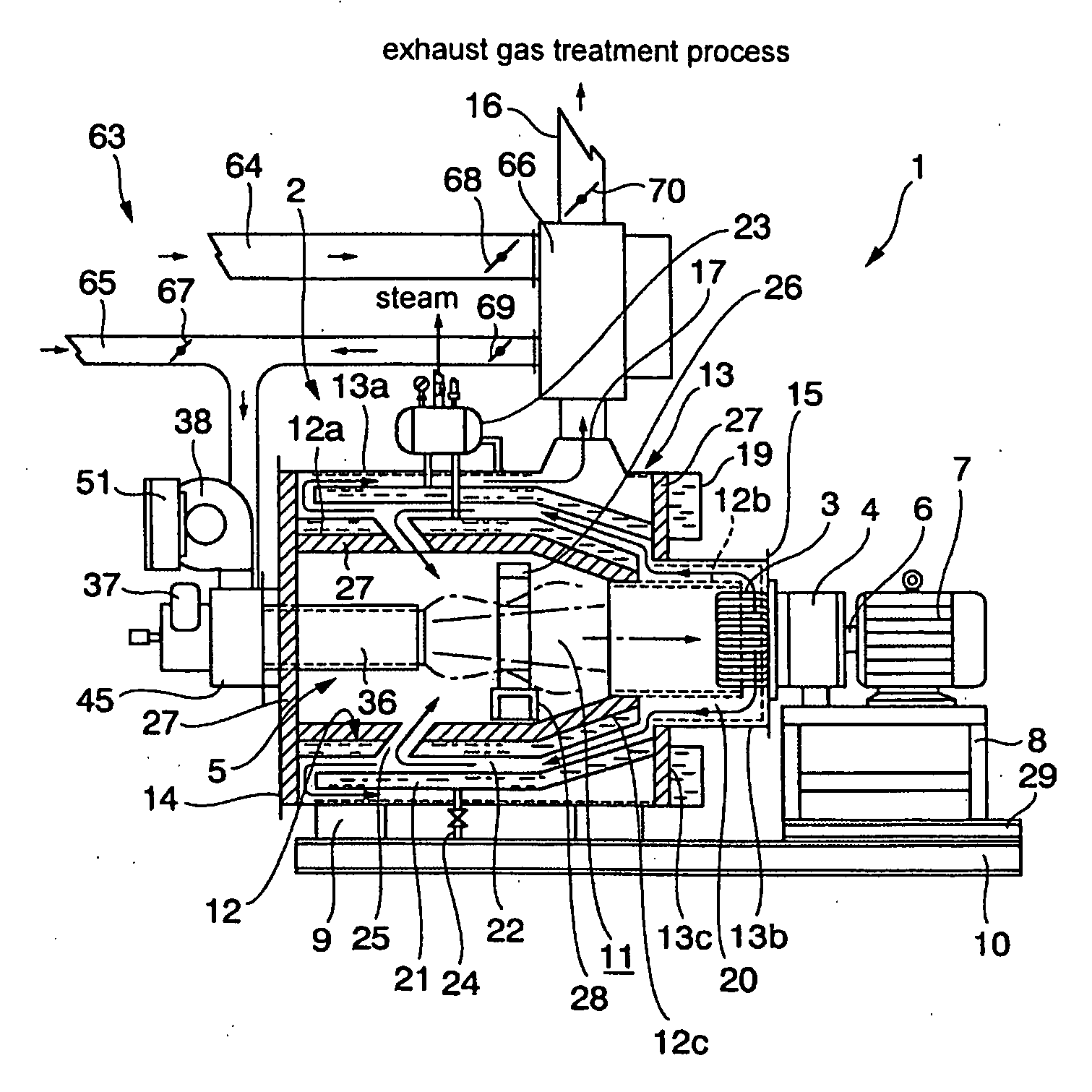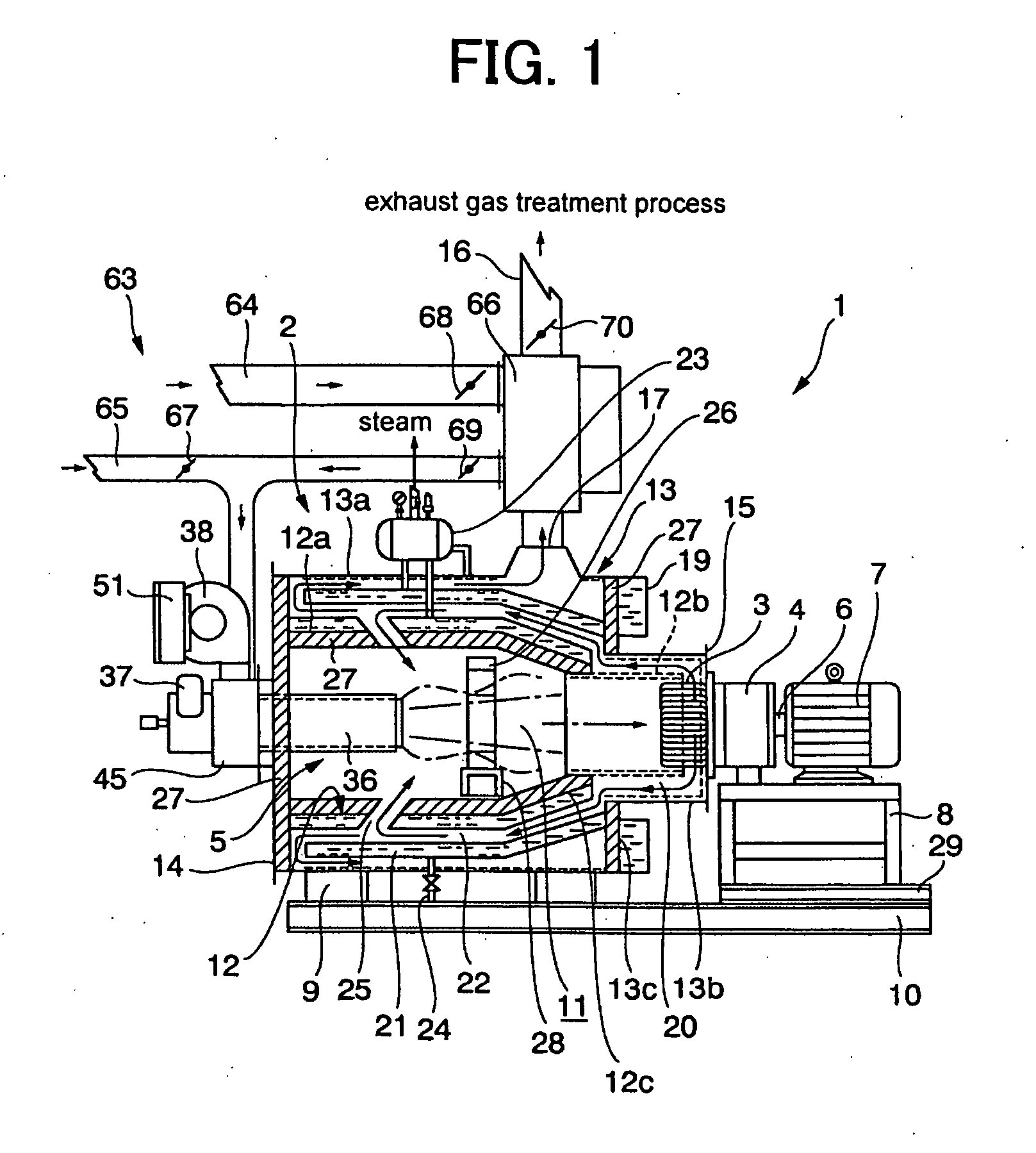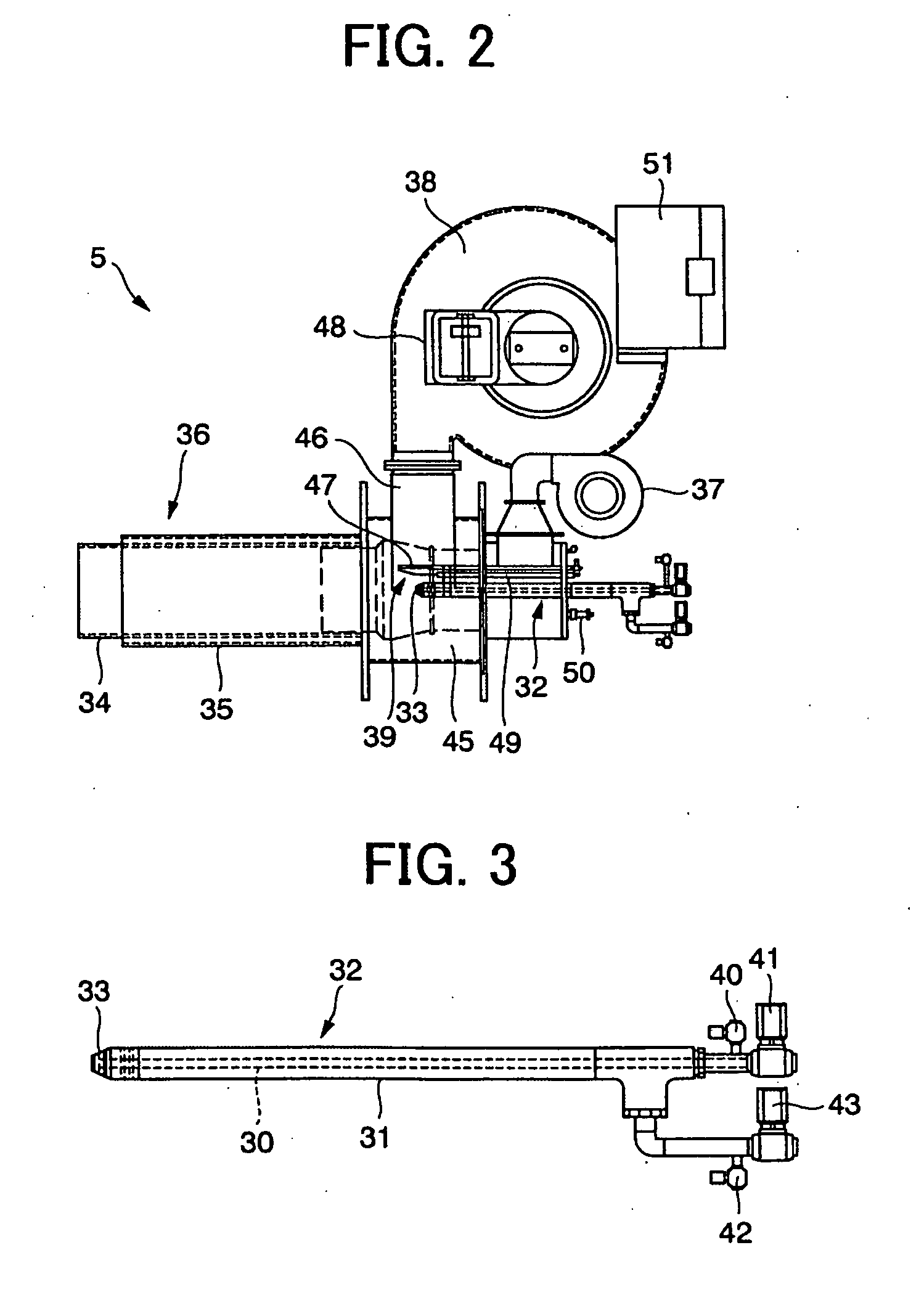Cogeneration system
a cogeneration system and engine technology, applied in the direction of machines/engines, mechanical equipment, greenhouse gas reduction, etc., can solve the problems of large amount of thermal energy and systems cannot be said to use thermal energy efficiently
- Summary
- Abstract
- Description
- Claims
- Application Information
AI Technical Summary
Benefits of technology
Problems solved by technology
Method used
Image
Examples
Embodiment Construction
[0052] The following provides a detailed description of the preferred embodiments of the cogeneration system invention with reference to the attached figures. This embodiment of the cogeneration system 1, which is illustrated in FIG. 1, is primarily structured from boiler 2 which uses exhaust gas to heat a liquid medium [i.e., water] and extract thermal energy therefrom, Stirling engine 4 which includes heater 3 and which operates from a sealed operating fluid heated by heater 3, and burner unit 5 that serves as the thermal source from which thermal energy, that is, combustion flames, the thermal radiation from those flames, and combustion-generated exhaust gas, is supplied to boiler 2 and heater 3 of Stirling engine 4. Output shaft 6 of Stirling engine 4 is connected to electrical generator 7 as means of converting thermal energy generated by heater 3 into electricity.
[0053] Stirling engine 4, electrical generator 7, and boiler 2 are mounted in a horizontal orientation to frame 10...
PUM
| Property | Measurement | Unit |
|---|---|---|
| temperatures | aaaaa | aaaaa |
| temperature | aaaaa | aaaaa |
| thermal energy | aaaaa | aaaaa |
Abstract
Description
Claims
Application Information
 Login to View More
Login to View More - R&D
- Intellectual Property
- Life Sciences
- Materials
- Tech Scout
- Unparalleled Data Quality
- Higher Quality Content
- 60% Fewer Hallucinations
Browse by: Latest US Patents, China's latest patents, Technical Efficacy Thesaurus, Application Domain, Technology Topic, Popular Technical Reports.
© 2025 PatSnap. All rights reserved.Legal|Privacy policy|Modern Slavery Act Transparency Statement|Sitemap|About US| Contact US: help@patsnap.com



